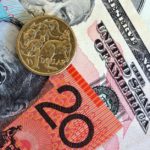Gold fell on Friday on a firmer dollar but still hovered near the highest in five months after the European Central Bank introduced an asset-purchasing program and ahead of a Greek vote, the outcome of which may lead to the country leaving the Eurozone. Silver, platinum and palladium fell as well. Copper headed for a sixth weekly drop amid worries for softer demand from top consumer China.
Comex gold for delivery in February fell 0.38% to $1 295.8 per troy ounce by 13:18 GMT, shifting in a daily range of $1 302.9 – $1 292.7. The precious metal settled 0.54% higher on Thursday, but not before it jumped to $1 307.8, its highest since August 15.
Gold prices eased as the US dollar rallied to new highs and Goldman Sachs cut its price outlook for the metal, citing low inflation and expectations for an interest rate hike by the Federal Reserve.
The bank expects prices to remain supported at current levels for the next few months due to weaker US economic data and monetary stimulus by the European Central Bank but cut its estimates for 2016 and 2017 to $1 089 and $1 050 per ounce, respectively.
The precious metal surged to the highest in five months yesterday after the ECB announced it will start buying €60 billion worth of bonds, with maturity between 2 and 30 years, every month until September 2016, outlining efforts to rejuvenate the European economy and fend off deflation.
The metal rallied, as it typically draws support from looser monetary policies, but the move also pushed the euro to its lowest in 11 years against the dollar, pressuring dollar-denominated commodities.
The US dollar index for settlement in March was up 1.06% at 95.360 at 13:18 GMT, having earlier risen to a new 12-year high of 95.775. The US currency gauge climbed 1.31% on Thursday to 94.362. A stronger greenback makes dollar-denominated commodities more expensive for holders of foreign currencies and curbs their appeal as an alternative investment, and vice versa.
However, the yellow metal also drew support as uncertainty persisted in the region, driven by speculations that Greece may be the first country to leave the 19-member group. Should the Syriza party win at the elections scheduled on January 25, as widely expected, Greece will most likely depart the Eurozone, in line with the political group’s promises.
Investor’s attention is now shifting towards the upcoming Federal Reserve meeting next week, when policy makers will discuss whether to increase interest rates. The US economy is showing signs of improvement, which weighs in favor of a rate hike. However, inflation is still running below Fed’s target of 2%, pressured by plunging oil prices.
Copper
Copper fell for a second day on Friday and headed for a sixth weekly decline, dragged by concerns about the red metals demand outlook from top consumer China.
Comex copper for delivery in March traded 2.21% lower at $2.5215 per pound at 13:18 GMT, having shifted in a daily range of $2.5855-$2.5105. Prices slid 1.30% yesterday to $2.5785 and are down 3.7% so far for the week. This would be a sixth consecutive weekly drop, a losing streak unseen since mid-2012.
The industrial metal fell after preliminary private data showed a contraction in Chinas manufacturing sector continued for a second month, although the figures topped analysts forecasts. The HSBC Flash China Manufacturing PMI rose to 49.8 from December’s final reading of 49.6, while the Flash China Manufacturing Output Index hit a three-month high of 50.1 from 49.9 in December.
Hongbin Qu, Chief Economist, China & Co-Head of Asian Economic Research at HSBC commented on the report: “Domestic demand improved marginally while external demand remained solid. The labour market weakened and prices fell further. Today’s data suggest that the manufacturing slowdown is still ongoing amidst weak domestic demand. More monetary and fiscal easing measures will be needed to support growth in the coming months.”
Japan also marked an improvement from a month earlier, while factory activity growth in the Eurozone as a whole barely rose, with the corresponding preliminary PMI hitting 51.0 from 50.6 in December. Manufacturing activity growth in powerhouse Germany slowed to 51.0 from 51.2 in December, the preliminary report showed, while Frances reading registered a better-than-expected 49.5 from 47.5 in December. Nevertheless, the French manufacturing sector remained in the contraction zone for a ninth straight month.
A similar gauge is expected to show later today that factory activity in the US expanded further in January, while investors also await existing home sales numbers that are poised to have improved in December.





